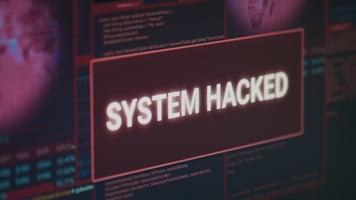Cyber attacks have become a significant threat to individuals, businesses and governments in our digital world. Understanding how to identify and stop these evolving attacks is crucial for maintaining the security and integrity of your data and systems, especially since it takes companies an average of 197 days to detect a cyber attack and 69 days to contain a breach.
This invaluable guide will walk you through the essential steps to detect a cyber attack and take appropriate actions to mitigate its impact and improve your security posture. Understanding how to spot and stop a cyber attack can be the difference between a minor incident and a major disaster.
Read: The Best Practices Against Cyber Attacks
Identifying a Cyber Attack
Identifying a cyber attack promptly can significantly reduce the damage it causes. Here are some key indicators and methods to recognize a potential cyber attack:
1. Unusual System Behavior
One of the first signs of a cyber attack is unusual behavior on your systems. This could include:
- Sluggish performance: Devices, systems or networks suddenly run much slower than usual.
- Unexplained crashes: Applications or systems slow down, crash or restart without any apparent reason.
- Unexpected pop-ups: Frequent and unusual pop-ups or ads, especially those asking for login credentials.
2. Unauthorized Access
Keep an eye out for any signs of unauthorized access, such as:
- Unfamiliar login attempts: Multiple failed login attempts or logins from unfamiliar IP addresses or devices.
- Unexpected account changes: Unauthorized changes to account settings, passwords or other sensitive information.
- Unexplainable charges: Unusual or strange charges to your credit card or account or payments for purchases you didn’t make.
3. Suspicious Network Activity
Monitor your network for any unusual activity, like:
- High data traffic: Sudden spikes in data traffic that regular activities can’t exlain.
- Unknown devices or software: Detection of unknown devices or software connected to your network.
- Unusual outbound connections: Systems making unexpected outbound connections, particularly to foreign or suspicious locations or during non-office hours.
4. Alerts from Security Software
Modern security software is designed to detect and alert you to potential threats.
- Antivirus alerts: Notifications from antivirus software about detected threats or suspicious files.
- Firewall alerts: Warnings from firewalls about unusual or unauthorized access attempts.
5. Data Integrity Issues
Unexpected issues with data can also be a sign of a cyber attack.
- Corrupted files: Files that suddenly become corrupted or inaccessible.
- Unexplained changes: Unexpected modifications or deletions of files, data and software.
Steps to Stop a Cyber Attack
Once you have identified a potential cyber attack, swift action is crucial. Here are several steps you should take to stop a cyber attack and mitigate its devastating effects:
1. Disconnect and Isolate
The first step in responding to a cyber attack is to contain it.
- Disconnect affected systems: Remove affected systems from the network to prevent the attack from spreading.
- Isolate critical systems: Isolate critical systems and networks to protect them from being compromised.
2. Assess the Damage
Determine the scope and impact of the attack.
- Identify affected systems: Pinpoint which systems and data have been compromised.
- Assess data loss: Evaluate the extent of any data loss or corruption.
3. Notify Relevant Parties
Inform key stakeholders and authorities about the attack.
- Internal communication: Notify your IT team, management and affected employees.
- External communication: Inform customers, partners and regulatory bodies, including financial institutions and the authorities.
4. Eradicate the Threat
Remove the threat from your systems:
- Scan for malware: Use antivirus and antimalware tools to detect and remove any malicious software.
- Patch vulnerabilities: Apply security patches to fix vulnerabilities that may have been exploited.
5. Restore Systems and Data
Recover your systems and data to return to normal operations.
- Restore from backups: Use clean backups to restore compromised systems and data.
- Verify integrity: Ensure restored systems and data are secure and malware-free.
6. Review and Improve Security
Take steps to prevent future attacks:
- Conduct a post-mortem: Analyze the attack to understand how it occurred and what can be improved.
- Update security policies: Revise your security policies and procedures based on lessons learned.
Read: Cybersecurity Essentials for Sustainable Success
Other Preventative Measures
Implement additional security measures to stop a cyber attack:
- Employee training: Regular training sessions and updates can significantly reduce the risk of successful cyber attacks. Educate your staff on recognizing and reporting phishing emails, suspicious links and social engineering tactics.
- Regular software updates: Keep all systems, software and hardware up to date with the latest security patches and versions to close potential vulnerabilities.
- Regularly backup data: Regularly backup your data and store it securely offsite. This ensures you can quickly recover from a ransomware attack.
- Enable multi-factor authentication (MFA): MFA is an additional security step that requires extra authentication before someone receives access.
- Different plans: Develop and rehearse a comprehensive incident response plan, business continuity plan and disaster recovery plan. Knowing what steps to take when an attack occurs can minimize damage and downtime.
- Other robust security measures: Implement strong firewalls, intrusion detection and prevention systems and complex passwords to prevent unauthorized access.
Read: The Devastating Costs of a Cyber Attack
Stay Safe with Thriveon
By staying vigilant and proactive, you can protect your business from the growing threat of cyber attacks. At Thriveon, we are here to support you with robust cybersecurity solutions tailored to your specific needs, ensuring your company’s security and peace of mind.
Schedule a meeting with us now.

